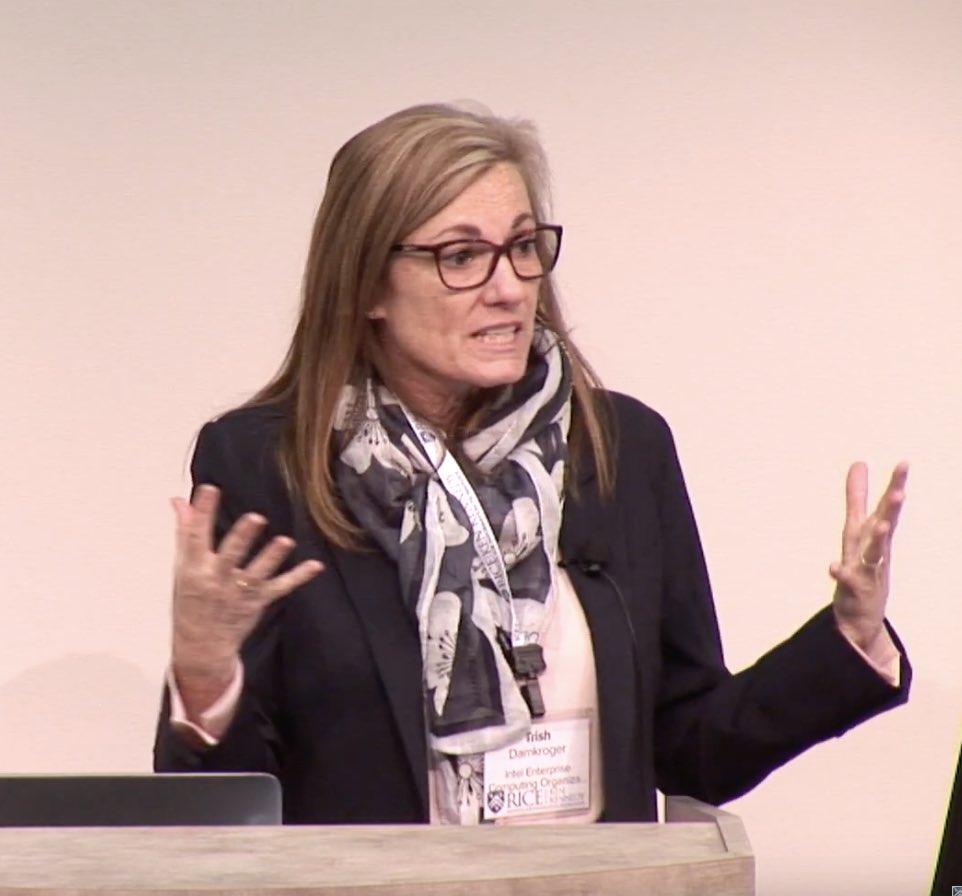In this Chip Chat podcast, Trish Damkroger from Intel outlines a few of the key technologies coming to the Aurora supercomputer in 2021. To enable Exascale levels of performance, Aurora will be built with a future generation Intel Xeon Scalable processor, the recently announced Intel Xe compute architecture, and Intel Optane DC persistent memory. Built by subcontractor Cray, Aurora will enable ground-breaking science such as precision medicine, climate modeling, weather forecasting, and materials science.
Intel has unparalleled assets to accelerate the path to exascale, anchored on Intel’s six pillars of innovation: process, architecture, memory, interconnect, security, and software. Each of these innovation areas will play a crucial role in addressing the various technical challenges to exascale. As an example, we are investing in new processor technologies, energy efficient designs, and advanced 3D packaging capabilities to build systems that will meet the power requirements for an exascale system. Another example is software as the programmability and real-world usability of exascale class systems is paramount. Our recent announcement on OneAPI is focused on unifying the various architectures under a single umbrella with optimized libraries to enable exascale computing for the broadest range of developers.

Intel will deliver the Aurora supercomputer, the United States’ first exascale system, to Argonne National Laboratory in 2021.
Trish Damkroger is Vice President and General Manager of the Extreme Computing Organization in Intel’s Data Center Group. She leads Intel’s global technical and high performance computing business and is responsible for developing and executing Intel’s strategy, building customer relationships and defining a leading product portfolio for technical computing workloads, including emerging areas such as high performance analytics, HPC in the cloud, and artificial intelligence. Trish’s Technical Computing portfolio includes traditional HPC platforms, workstations, processors and all aspects of solutions including industry leading compute, storage, network and software products.
Ms. Damkroger has more than 27 years of technical and managerial roles both in the private sector and within the United States Department of Energy, she was the Associate Director of Computation at Lawrence Livermore National Laboratory leading a 1,000 person group that is one of the world’s leading supercomputing and scientific experts. Since 2006, Ms. Damkroger has been a leader of the annual Supercomputing Conference series, the premier international meeting for high performance computing. Trish has been the General Chair for HPC’s premier industry event Supercomputing Conference 2014 and has been nominated the Vice-Chair for upcoming Supercomputing Conference in 2018 and has held many other committee positions. Ms. Damkroger has a master’s degree in electrical engineering from Stanford University.





